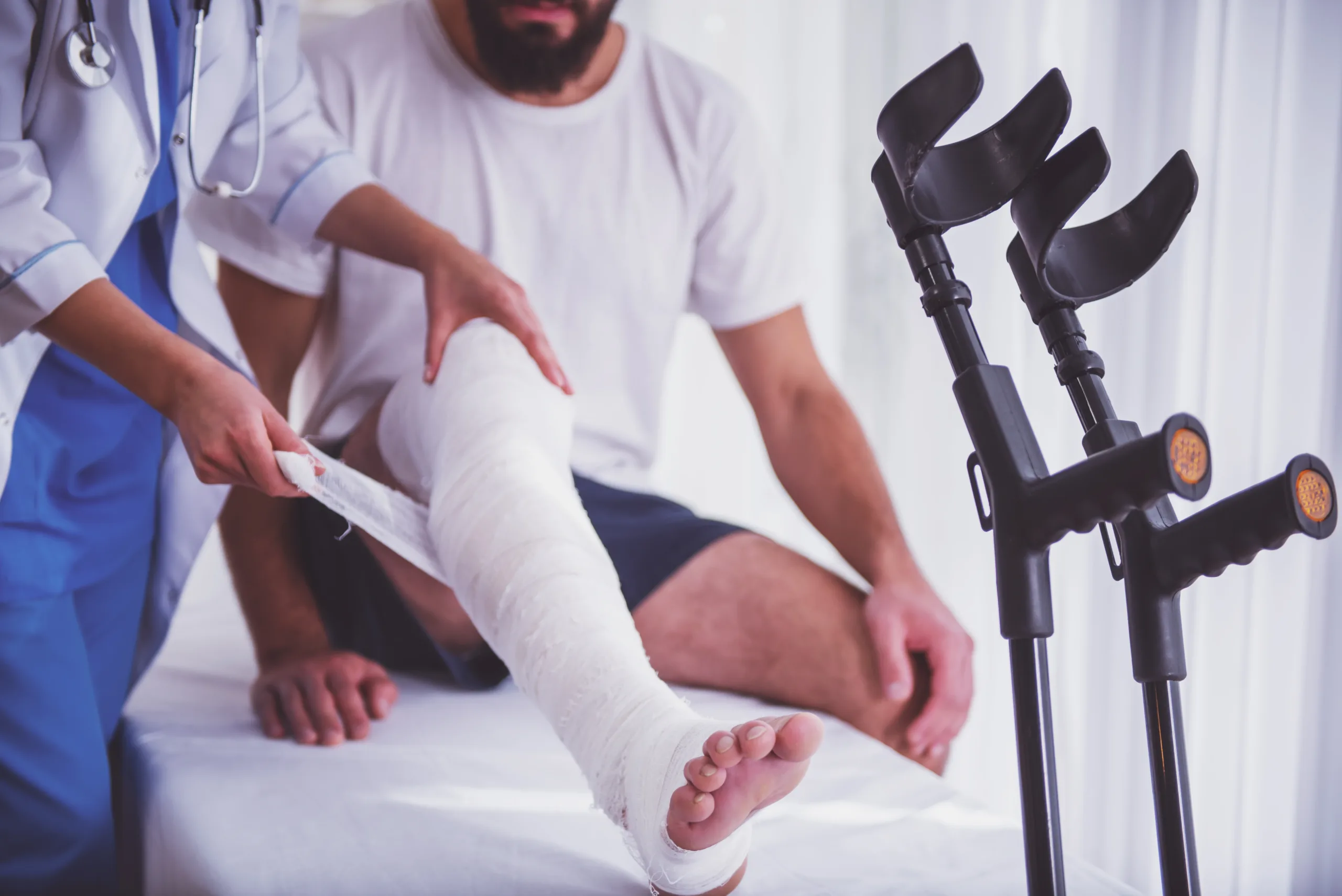Negligence Uncovered: Exploring Fault and Liability in Louisiana
“What is Negligence in Louisiana?”, this question serves as the compass that guides justice seekers through the complex legal intricacies. Negligence, often referred to as the foundation of personal injury claims, encompasses a set of criteria that must be meticulously demonstrated to establish fault.
Navigating the intricate legal landscape of personal injury in Monroe, necessitates experienced and dedicated legal representation. If you or a loved one find yourselves entangled in a situation requiring an astute understanding of negligence and its role in proving fault, we invite you to connect with E. Orum Young Law Personal Injury Attorney for a free case review.
With a proven track record and a commitment to upholding justice, our legal team stands ready to guide you through the complexities of your case, ensuring your rights are protected and your voice is heard.
What is Negligence in Louisiana?
Negligence, in legal terms, refers to a failure to exercise the level of care, caution, and diligence that a reasonably prudent person would under similar circumstances. It is a fundamental concept in tort law, which governs civil wrongs and personal injury cases.
Proving negligence requires demonstrating each of these elements by a preponderance of the evidence, meaning that it is more likely than not that the defendant’s negligence caused the plaintiff’s harm.
Negligence cases can vary widely, from car accidents and medical malpractice to slip-and-fall incidents and product liability claims. The legal principles of negligence help determine whether a person or entity is legally liable for the harm caused to another due to their failure to meet an expected standard of care.
What are the Elements of a Negligence Case?
In the pursuit of winning a negligence lawsuit, the plaintiff’s success hinges on establishing certain crucial “elements.” Among these elements, a pivotal requirement is “damages,” necessitating that the plaintiff must have experienced injuries or losses for which the defendant can be held accountable. Importantly, even if the defendant’s negligence is proven, the plaintiff’s case may falter if no harm directly resulted from that negligence.
Juries are instructed to meticulously analyze facts, testimonies, and evidence to determine whether the following key elements have been met:
- Duty of Care: The resolution of some negligence cases revolves around whether the defendant had an obligation towards the plaintiff. This legal duty emerges when a recognized relationship between the defendant and the plaintiff necessitates specific actions from the defendant. Typically, a judge determines whether such a duty exists, guided by the expectations of a reasonable person under comparable circumstances. For example, if a defendant struck a pedestrian while loading a truck, the query centers on whether a duty was owed to the pedestrian based on the context.
- Breach of Duty of Care: Mere establishment of duty is insufficient; it must also be shown that the defendant failed to meet this duty. A breach occurs when the defendant doesn’t exercise reasonable care. This determination is usually made by a jury as a factual inquiry. In the aforementioned example, the jury would assess whether the defendant exercised reasonable care while handling the bags of grain near the pedestrian.
- Cause in Fact of the Injury: In traditional negligence principles, the plaintiff must prove that the defendant’s actions directly caused the plaintiff’s harm. This is often referred to as “but-for” causation, meaning that the harm would not have occurred “but for” the defendant’s actions. For instance, a pedestrian could prove this by showing that the injury wouldn’t have happened if not for the defendant’s negligent act involving the bag of grain.
- Proximate Cause of Harm: Proximate cause pertains to the extent of the defendant’s responsibility within a negligence case. The defendant is held liable only for harms that could have been reasonably anticipated based on their actions. In the earlier scenario, the pedestrian would establish a proximate cause by demonstrating that harm from the bag striking the individual should have been foreseeable by the defendant.
- Damages and Harm: A plaintiff in a negligence case must demonstrate a legally recognized harm, often in the form of physical injury or property damage. It’s not enough for the defendant to have failed to exercise reasonable care; their lack of care must have resulted in actual harm to a party to whom they owed a duty of care. Additionally, adhering to the appropriate time frame for bringing a personal injury claim before the court is essential.
What is the Importance of Proving Negligence in Personal Injury Cases?
Proving negligence holds immense significance within the realm of personal injury cases, serving as the bedrock upon which the injured party’s pursuit of compensation and justice is built. Negligence establishes a clear framework to ascertain responsibility for causing harm through a lack of reasonable care. This foundational principle plays a pivotal role in determining fault, attributing the cause of injury to specific individuals or entities, and ensuring that those accountable bear the legal repercussions of their actions.
The establishment of negligence is particularly crucial for the injured party’s ability to recover damages. By proving negligence, individuals can seek compensation for a range of losses, encompassing medical expenses, lost earnings, emotional distress, property damage, and more. This enables a comprehensive restoration process that aims to bring the injured person as close as possible to their pre-injury state, addressing both tangible and intangible consequences.
Proving negligence serves the intrinsic goal of restoring justice. It provides an avenue for the injured party to have their claims heard and validated, offering a sense of closure and redress for the harm endured. By navigating the complexities of negligence, personal injury cases not only address individual grievances but also advance the principles of accountability, safety, and fairness within the broader legal landscape.
How Contributory and Comparative Negligence Differ?
In certain situations, liability for an incident can be distributed among multiple parties, potentially encompassing the injured party as well. This scenario introduces the concepts of comparative and contributory negligence, legal frameworks that scrutinize the actions of the victim and may curtail or preclude their ability to seek compensation based on their own involvement in the accident.
Typically overseen by a judge, this process involves the assignment of fault percentages to each individual who bears legal responsibility for the occurrence. The ramifications of this allocation hinge on the laws of the particular state and the specific percentage attributed to the injured party. The implications for your case are contingent upon the legal principles of the state and the extent of fault attributed to you, as determined by the judge.
Pure Contributory Negligence
In jurisdictions that adhere to the principle of pure contributory negligence, the injured party is completely precluded from seeking recovery if any degree of negligence is attributed to them. In such cases, the injured party is ineligible to receive compensation for their injuries, irrespective of the degree of negligence demonstrated by the other party involved.
Pure Comparative Fault
In states adopting the principle of pure comparative fault, an injured party retains the right to pursue compensation even if they bear a substantial degree of fault, such as 99 percent. Nonetheless, their recoverable compensation is proportionally diminished in accordance with their own percentage of fault.
To illustrate, if a jury determines that the plaintiff’s injuries merit a valuation of $100,000, a plaintiff found to be 99 percent at fault would be entitled to recover only $1,000. Similarly, an individual responsible for just 25 percent of the accident could potentially seek 75 percent of the calculated value representing their documented expenses and losses.
Thirteen states use pure comparative fault, including Louisiana.
Speak With Our Monroe Personal Injury Attorney Now!
When faced with the complex and often overwhelming process of proving fault through negligence, having the right legal partner by your side can make all the difference. That’s where E. Orum Young Law Personal Injury Attorney comes into play. Our dedicated legal team possesses the experience and commitment needed to navigate the intricacies of your case, ensuring that your rights are upheld and your voice is heard.
If you or a loved one are in need of sound legal counsel and representation, we encourage you to take the next step. Reach out to E. Orum Young Law for a free case review. Let us evaluate the details of your situation, provide you with insights on what is negligence in Lousiana, and offer guidance on the best course of action. Together, we can pursue justice and secure the resolution you rightfully deserve.
Contact us today and embark on a journey towards achieving the peace of mind and justice you seek. Your story matters, and we are here to help you tell it.






